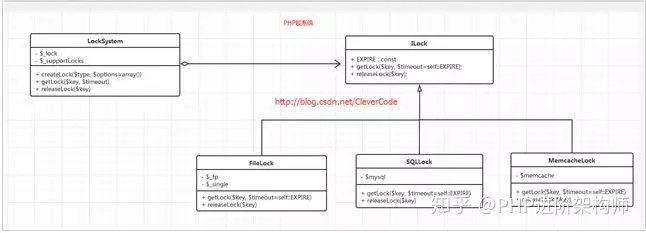在工作項目中�,會遇到一些php并發訪問去修改一個數據問題����,如果這個數據不加鎖�����,就會造成數據的錯誤����。下面我將分析一個財務支付鎖的問題�。希望對大家有所幫助。
1 沒有應用鎖機制
1.1 財務支付簡化版本代碼
!--?php
/**
* pay.php
*
* 支付沒有應用鎖
*
* Copy right (c) 2016
*
* modification history:
* --------------------
* 2018/9/10, by CleverCode, Create
*
*/
//用戶支付
function pay($userId,$money)
{
if(false == is_int($userId) || false == is_int($money))
{
return false;
}
//取出總額
$total = getUserLeftMoney($userId);
//花費大于剩余
if($money --> $total)
{
return false;
}
//余額
$left = $total - $money;
//更新余額
return setUserLeftMoney($userId,$left);
}
//取出用戶的余額
function getUserLeftMoney($userId)
{
if(false == is_int($userId))
{
return 0;
}
$sql = "select account form user_account where userid = ${userId}";
//$mysql = new mysql();//mysql數據庫
return $mysql->query($sql);
}
//更新用戶余額
function setUserLeftMoney($userId,$money)
{
if(false == is_int($userId) || false == is_int($money))
{
return false;
}
$sql = "update user_account set account = ${money} where userid = ${userId}";
//$mysql = new mysql();//mysql數據庫
return $mysql->execute($sql);
}
?>
1.2 問題分析
如果有兩個操作人(p和m)����,都用用戶編號100賬戶,分別在pc和手機端同時登陸�,100賬戶總余額有1000��,p操作人花200�����,m操作人花300。并發過程如下。
p操作人:
取出用戶的余額1000。
支付后剩余 800 = 1000 - 200。
更新后賬戶余額800���。
m操作人:
取出用戶余額1000�����。
支付后剩余700 = 1000 - 300。
支付后賬戶余額700。
兩次支付后����,賬戶的余額居然還有700,應該的情況是花費了500�����,賬戶余額500才對���。造成這個現象的根本原因���,是并發的時候�����,p和m同時操作取到的余額數據都是1000�。
2 加鎖設計
鎖的操作一般只有兩步��,一 獲取鎖(getLock)���;二是釋放鎖(releaseLock)��。但現實鎖的方式有很多種,可以是文件方式實現��;sql實現����;Memcache實現;根據這種場景我們考慮使用策略模式�����。
2.1 類圖設計如下

2.2 php源碼設計如下
LockSystem.php
!--?php
/**
* LockSystem.php
*
* php鎖機制
*
* Copy right (c) 2018
*
* modification history:
* --------------------
* 2018/9/10, by CleverCode, Create
*
*/
class LockSystem
{
const LOCK_TYPE_DB = 'SQLLock';
const LOCK_TYPE_FILE = 'FileLock';
const LOCK_TYPE_MEMCACHE = 'MemcacheLock';
private $_lock = null;
private static $_supportLocks = array('FileLock', 'SQLLock', 'MemcacheLock');
public function __construct($type, $options = array())
{
if(false == empty($type))
{
$this--->createLock($type, $options);
}
}
public function createLock($type, $options=array())
{
if (false == in_array($type, self::$_supportLocks))
{
throw new Exception("not support lock of ${type}");
}
$this->_lock = new $type($options);
}
public function getLock($key, $timeout = ILock::EXPIRE)
{
if (false == $this->_lock instanceof ILock)
{
throw new Exception('false == $this->_lock instanceof ILock');
}
$this->_lock->getLock($key, $timeout);
}
public function releaseLock($key)
{
if (false == $this->_lock instanceof ILock)
{
throw new Exception('false == $this->_lock instanceof ILock');
}
$this->_lock->releaseLock($key);
}
}
interface ILock
{
const EXPIRE = 5;
public function getLock($key, $timeout=self::EXPIRE);
public function releaseLock($key);
}
class FileLock implements ILock
{
private $_fp;
private $_single;
public function __construct($options)
{
if (isset($options['path']) is_dir($options['path']))
{
$this->_lockPath = $options['path'].'/';
}
else
{
$this->_lockPath = '/tmp/';
}
$this->_single = isset($options['single'])?$options['single']:false;
}
public function getLock($key, $timeout=self::EXPIRE)
{
$startTime = Timer::getTimeStamp();
$file = md5(__FILE__.$key);
$this->fp = fopen($this->_lockPath.$file.'.lock', "w+");
if (true || $this->_single)
{
$op = LOCK_EX + LOCK_NB;
}
else
{
$op = LOCK_EX;
}
if (false == flock($this->fp, $op, $a))
{
throw new Exception('failed');
}
return true;
}
public function releaseLock($key)
{
flock($this->fp, LOCK_UN);
fclose($this->fp);
}
}
class SQLLock implements ILock
{
public function __construct($options)
{
$this->_db = new mysql();
}
public function getLock($key, $timeout=self::EXPIRE)
{
$sql = "SELECT GET_LOCK('".$key."', '".$timeout."')";
$res = $this->_db->query($sql);
return $res;
}
public function releaseLock($key)
{
$sql = "SELECT RELEASE_LOCK('".$key."')";
return $this->_db->query($sql);
}
}
class MemcacheLock implements ILock
{
public function __construct($options)
{
$this->memcache = new Memcache();
}
public function getLock($key, $timeout=self::EXPIRE)
{
$waitime = 20000;
$totalWaitime = 0;
$time = $timeout*1000000;
while ($totalWaitime $time false == $this->memcache->add($key, 1, $timeout))
{
usleep($waitime);
$totalWaitime += $waitime;
}
if ($totalWaitime >= $time)
throw new Exception('can not get lock for waiting '.$timeout.'s.');
}
public function releaseLock($key)
{
$this->memcache->delete($key);
}
}
3 應用鎖機制
3.1 支付系統應用鎖
!--?php
/**
* pay.php
*
* 支付應用鎖
*
* Copy right (c) 2018
*
* modification history:
* --------------------
* 2018/9/10, by CleverCode, Create
*
*/
//用戶支付
function pay($userId,$money)
{
if(false == is_int($userId) || false == is_int($money))
{
return false;
}
try
{
//創建鎖(推薦使用MemcacheLock)
$lockSystem = new LockSystem(LockSystem::LOCK_TYPE_MEMCACHE);
//獲取鎖
$lockKey = 'pay'.$userId;
$lockSystem--->getLock($lockKey,8);
//取出總額
$total = getUserLeftMoney($userId);
//花費大于剩余
if($money > $total)
{
$ret = false;
}
else
{
//余額
$left = $total - $money;
//更新余額
$ret = setUserLeftMoney($userId,$left);
}
//釋放鎖
$lockSystem->releaseLock($lockKey);
}
catch (Exception $e)
{
//釋放鎖
$lockSystem->releaseLock($lockKey);
}
}
//取出用戶的余額
function getUserLeftMoney($userId)
{
if(false == is_int($userId))
{
return 0;
}
$sql = "select account form user_account where userid = ${userId}";
//$mysql = new mysql();//mysql數據庫
return $mysql->query($sql);
}
//更新用戶余額
function setUserLeftMoney($userId,$money)
{
if(false == is_int($userId) || false == is_int($money))
{
return false;
}
$sql = "update user_account set account = ${money} where userid = ${userId}";
//$mysql = new mysql();//mysql數據庫
return $mysql->execute($sql);
}
?>
3.2 鎖分析
p操作人:
獲取鎖:pay100
取出用戶的余額1000�����。
支付后剩余 800 = 1000 - 200。
更新后賬戶余額800。
釋放鎖:pay100
m操作人:
1����、等待鎖:pay100
2�、獲取鎖:pay100
3、獲取余額:800
3�����、支付后剩余500 = 800 - 300���。
5����、支付后賬戶余額500。
6��、釋放鎖:pay100
兩次支付后�����,余額500���。非常完美了解決了并發造成的臨界區資源的訪問問題��。
到此這篇關于php并發加鎖問題分析與設計代碼實例講解的文章就介紹到這了,更多相關php并發加鎖問題分析與設計內容請搜索腳本之家以前的文章或繼續瀏覽下面的相關文章希望大家以后多多支持腳本之家!
您可能感興趣的文章:- PHP并發場景的三種解決方案代碼實例
- PHP解決高并發的優化方案實例
- php多進程模擬并發事務產生的問題小結
- PHP利用Mysql鎖解決高并發的方法
- php curl批處理實現可控并發異步操作示例
- php處理搶購類功能的高并發請求
- PHP+Redis 消息隊列 實現高并發下注冊人數統計的實例
- PHP開發中解決并發問題的幾種實現方法分析
- PHP使用Redis實現防止大并發下二次寫入的方法
- php結合redis高并發下發帖�、發微博的實現方法
- 詳解php處理大并發大流量大存儲